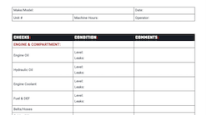Industry Looks Beyond Batteries to Power Longhaul Electric Tractors

This story appears in the May 15 print edition of Equipment & Maintenance Update, a supplement to Transport Topics.
Technological advances soon could make electric Class 8 tractors feasible for longhaul applications, but rather than relying solely on plug-in battery systems, those trucks likely will incorporate other power configurations such as hybrid solutions and hydrogen fuel cells.
At the same time, many predict that diesel fuel will continue to play a prominent role in powering the truck of the future.
“For longhaul, I don’t think any of the regulators or truck manufacturers today see batteries as a path to get to an all-electric truck,” said Patrick Couch, vice president of technical services for Gladstein, Neandross & Associates, a consulting firm specializing in alternative-fuel applications. “There would have to be a really fundamental breakthrough in the technology we have today.”
BEST OF MAY E&MU: More stories, columns
The challenge of a battery-electric vehicle for longhaul is the battery weight and charging requirements.
“If you were to consider a full-electric vehicle, Class 8, with a 200-mile range and a 65 miles-per-hour top speed, you’re looking at a battery that weighs as much as 16,000 pounds,” said Darren Gosbee, vice president of powertrain and advanced technology for Navistar International Corp., maker of the International brand of trucks.
Bill Kahn, principal engineer at Peterbilt Motors Co., a unit of Paccar Inc., estimates that a battery with a 200-mile range could cost up to $100,000.
Manufacturers have several methods beyond batteries to electrify a Class 8 tractor.
Many manufacturers are taking “baby steps” before going all in, said Robert Braswell, acting executive director of American Trucking Associations’ Technology & Maintenance Council. “In terms of electrification, you can either do a lot or a little.”
“You’re trying to reduce your use of fuel and repurpose wasted energy to power something more productive,” Braswell said.
Electric and hybrid-electric Class 8 trucks would come at a premium over a diesel truck because of the price of the batteries, but that cost should come down over time, said Vinoo Thomas, director of electrification business development at Cummins Inc. In addition, operating costs would be significantly lower than a diesel in terms of fuel and servicing, which would help offset the initial higher cost of an electric option.
Electric Class 8 vehicles are likely to make an appearance in the North American and European longhaul markets around 2020 or 2021, Thomas said. “Initially, this will be at very low volume but may begin to register from around 2025 as [electric] truck purchase costs begin to decline due to battery improvements.”
Cummins, a major supplier of diesel and natural gas engines for the trucking industry, is working on a plug-in hybrid driveline, which provides greater range capability than that of a full-battery electric vehicle.
“A downsized engine acts as a generator to supply power to the vehicle, and this enables the vehicle to switch between battery-only power, diesel engine power or a blend of engine and battery power,” Thomas said.
Peterbilt is working with strategic partners to develop several electric and hybrid-electric powertrain configurations.
“Depending on market acceptance, some of the technologies can be ready within the next few years,” Kahn said.
Given current technology, longhaul customers most likely will benefit from a hybrid configuration, which uses a smaller motor generator and battery pack to provide up to 5% driving benefit with traffic stop/start and a quieter last-mile delivery, Kahn said.
Other alternative fuels could play a key role in electric-hybrid technology.
Startup truck maker Nikola Motor Co. plans to launch its hydrogen-electric Class 8 tractor in mid-2020 and has secured reservations for more than 8,000 sleeper models and day cabs, CEO Trevor Milton said in late March. Road tests will begin in October 2018 with several fleets, including U.S. Xpress Enterprises.
The Nikola One will use high-density lithium-ion batteries and a hydrogen fuel cell. The tractor will be at least 2,000 pounds lighter than a traditional diesel-powered Class 8 truck, Milton said. “You’re talking about giving fleets an additional $1,000 in revenue,” he said.
Operating costs for the Nikola tractors will be more than 30% less than those of a diesel-powered tractor, Milton said. The company will offer its trucks through a flat lease rate of $5,000 to $7,000 a month or a per-mile rate that had yet to be determined as of late March. The lease will run six years or 1 million miles and cover all maintenance expenses, Milton said.
Nikola plans to produce hydrogen on-site at fueling locations through electrolysis, and the company is in discussions with major truck stop chains.
“We will have a major announcement in July,” Milton said.
Thomas, of Cummins, said the high cost of setting up a hydrogen fueling infrastructure is a major barrier to the fuel, and according to some reports, the CO2 emissions created from hydrogen production are higher than the CO2 savings achieved by the hydrogen fuel cell truck.
Cummins is evaluating the hydrogen fuel cell as a potential energy source and could transition its emerging electric vehicle capability to hydrogen when the fuel cell becomes a viable commercial proposition for Class 8 applications, Thomas said.
Navistar’s Gosbee said hydrogen fuel cells are very attractive — if the infrastructure challenge can be addressed.
Tom Liutkus, a spokesman for TravelCenters of America, said the truck stop chain likely would provide charging if the demand for electric trucks or cars reached critical mass.
“Technology must improve the range and recharging time of the vehicle in order to compete with today’s fueling methods,” he said.
Electric carmaker Tesla Inc. also intends to jump into the heavy-duty truck market. Co-founder and CEO Elon Musk said in April that the company plans to unveil an electric semi-truck in September. Tesla did not respond to requests for comment in mid-March.
Amid the current buzz around electric trucks, many in the industry said diesel fuel still will be the primary energy source for Class 8 trucks for years to come.
“Diesel fuel will be the fuel of choice for longhaul trucking for a very long time,” said Mike Roeth, executive director of the North American Council for Freight Efficiency. “It is an available fuel, and it is easy to use.”
“We have probably 120 to 150 years of fossil fuel infrastructure,” Navistar’s Gosbee said. “Changing that to be a different infrastructure isn’t something that can happen overnight.”
What’s more, clean diesel technology continues to improve, said Allen Schaeffer, executive director of the Diesel Technol- ogy Forum. “You’re seeing the truck OEMs deliver the next generation of diesel vehicle,” he said, adding that the low cost of diesel has made it harder for electric-hybrid technology to compete.
Andy Schmahl, an adviser for PricewaterhouseCoopers, said that although some companies look at new technology from a dollars-and-cents perspective, others look at it to support their sustainability initiatives or satisfy shippers that have made commitments to lower their carbon footprint.
Batteries remain an expensive choice for manufacturers, but costs are decreasing and battery technology is improving.
“With electric battery storage technology making these massive leaps and bounds, you will see it becoming practical where this is a possibility,” TMC’s Braswell said.
Vehicles with a hybrid electric or full-battery electric drivetrain weigh more than a diesel-powered equivalent, but the weight difference is usually less than a 10% increase, Thomas said. Regulators might allow electric trucks to have marginally higher weight limits than their diesel equivalents to provide the same payload capability, he said.
Currently, most lithium-ion battery packs should not be recharged in less than one hour.
“Therefore, with a 100-mile range truck and one-hour recharge times, it becomes impractical to do longhaul,” said Andy Swanton, vice president of truck sales at BYD, which manufactures a Class 8 battery-electric truck marketed to shorthaul and drayage operations.
Battery swaps could be a solution to that problem. “You have configurable trucks that could pull in and swap packs much like filling up a tank,” Swanton said.
Cummins is not far away from developing a full battery-electric system that would be viable for Class 8 trucks, initially for shorter routes but with the potential to cover extended routes as the charging infrastructure expands, Thomas said.
And TransPower offers a shorthaul electric tractor with a 40-mile range, but it plans to offer a range extender using compressed natural gas or hydrogen by the end of the summer, which could provide about 340 miles of range, said Joshua Goldman, vice president of business development for the California-based company.
As for electrified accessories, Navistar has turned to a “microhybrid” approach for cooling fans, water fan and heating, ventilation and air conditioning systems, Gosbee said. The internal combustion engine still moves the vehicle, but energy captured through regenerative braking and waste-heat recovery provides power, so accessories can be turned on only when needed, saving energy, Gosbee said, noting this technology still is in development.
What’s more, the ability to turn systems on as needed allows engineers to configure the systems to run at their most efficient point, providing additional energy benefits, Gosbee said. There is no clear timeline currently for the widespread introduction of electrified accessories, but there may be greater use of electrification to meet 2024 or 2027 greenhouse gas emissions standards.
Several components could be electrified as well.
“Think of all the things that run on the belt,” Braswell said. “That is a parasitic load,” he said, adding that electric power steering, brakes and water pumps could increase efficiency.
Meanwhile, Hyliion is developing electric drive axles for trailers to capture wasted energy when the vehicle is traveling downhill, store it in a battery and reuse it upon acceleration. The result is an average 30% reduction in fuel consumption, said Thomas Healy, CEO of the Pittsburgh-based company. “The truck is always the one pulling, but instead of having to pull all 80,000 pounds, now it is 50,000 pounds.”
Sensors determine and transmit inclines, declines, speed and changes in altitude.
“There is a delicate balance between letting energy go or capturing energy,” Healy said. “If it knows what is up ahead, it can decide when to release energy, at what rate and when is the best time and when should you recharge the battery.”
Hyliion will begin testing its system in the third quarter with four fleets and plans to enter full production in 2018.
Hyliion’s axles increase a truck’s weight by 700 to 800 pounds, but they’re categorized as an auxiliary power unit. “With that, the fleets are allotted an extra 450 pounds of payload they can carry,” Healy said. ³



